Mutek has a varied collection of approximately 800 applied art objects from Europe. This makes Mutek unique in the Netherlands. The applied art shown in Dutch museums is mainly of Dutch origin. Mutek believes it is good to also look outside the Netherlands and therefore focuses on all of Europe.
These objects range from large furniture to graphic printed matter. The collection includes work by Emile Gallé, Louis Majorelle, Henry van de Velde, H.P. Berlage, Bart van der Leck, W.H. Gispen, Walther Gropius, Wilhelm Wagenfeld, Jacques Ruhlmann, Le Corbusier, Charlotte Perriand, Gea Aulenti, and Gino Sarfatti, among others.
In many museums, art objects are displayed in a neutral space with white-painted walls, the so-called White Cube. This concept originated in the USA and was also applied in Europe from the 1930s. Mutek wants to create different interiors instead, each representing its own art movement. Through these interiors, visitors will be presented with an overview of applied art from 1880 to the present. The most important art movements from this period are described below.
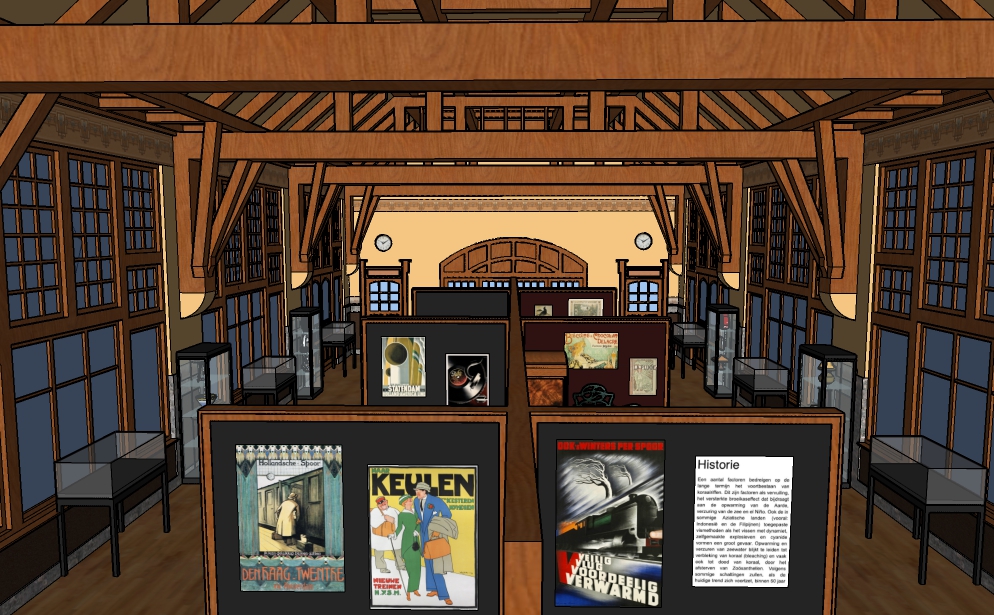
Art Nouveau/Jugendstil 1890 – 1914:
Art Nouveau is an art movement in both architecture and painting and draws its inspiration from nature. This art movement is based on Animism and is a reaction to Impressionism.
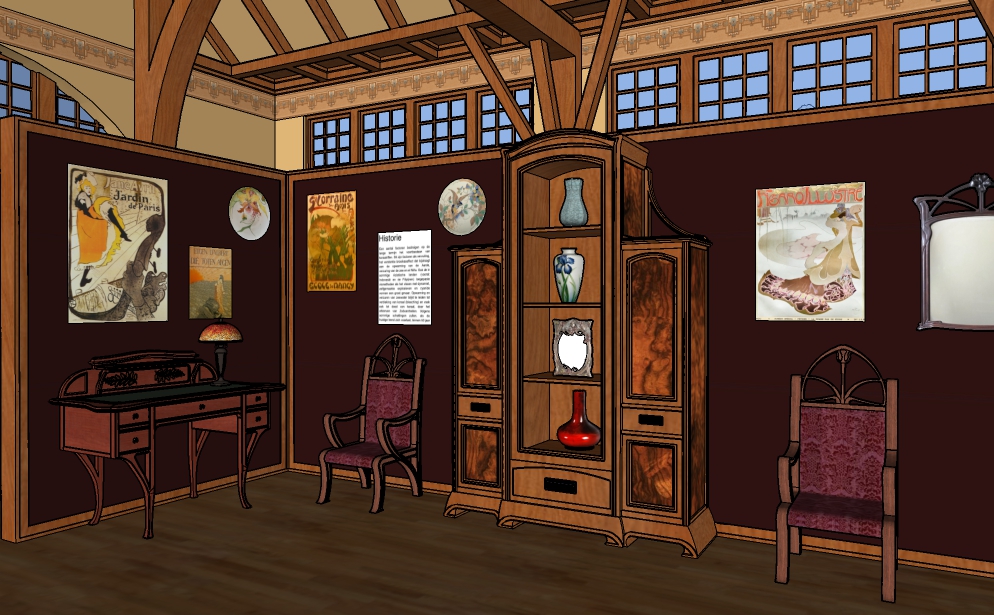
Within the Animistic culture, the woman symbolises reproduction and rebirth. The name Art Nouveau is derived from Siegfried Bing’s Galerie ‘l’Art Nouveau’. Graceful lines were used to express emotions and imitate nature. This led to asymmetrical compositions of floral representations.
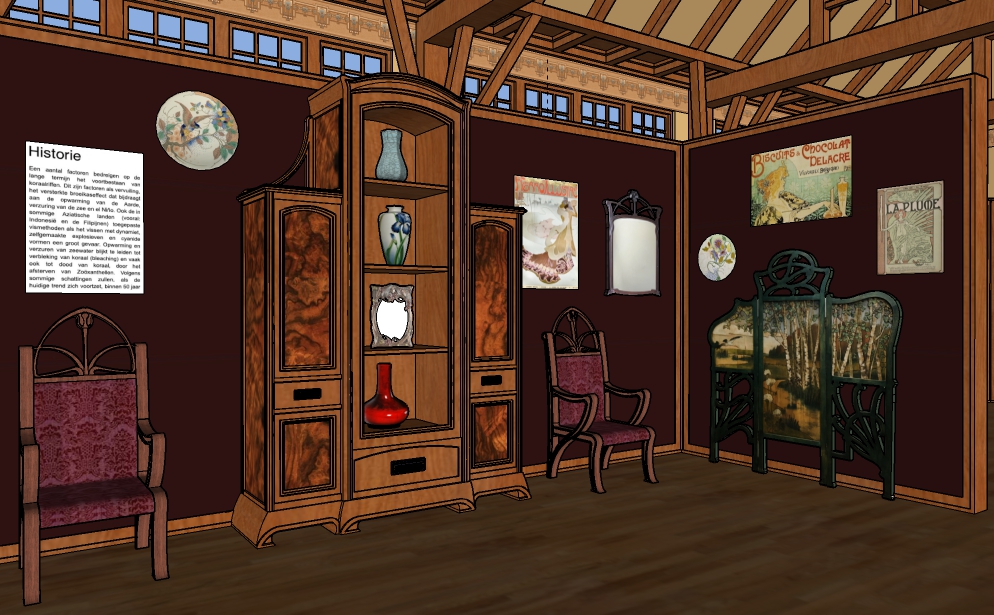
Because Siegfried Bing sold a lot of Japanese art in his gallery, Art Nouveau artists were inspired by Japanese art. This gave Art Nouveau Japanese influences. Important Art Nouveau artists were Emile Gallé, George de Feure, Louis Majorelle, Hector Guimard, Raoul Larche, Victor Horta, Hugo Leven, René Lalique, Henry van de Velde, and Eugène Vallin. The Mutek collection includes furniture, clocks, lamps, vases, posters, glassware, candlesticks, and tableware from this period, including a number of objects that were sold by Siegfried Bing’s gallery at the time. This will make the museum the first in the Netherlands to be able to show international Art Nouveau objects of this calibre.
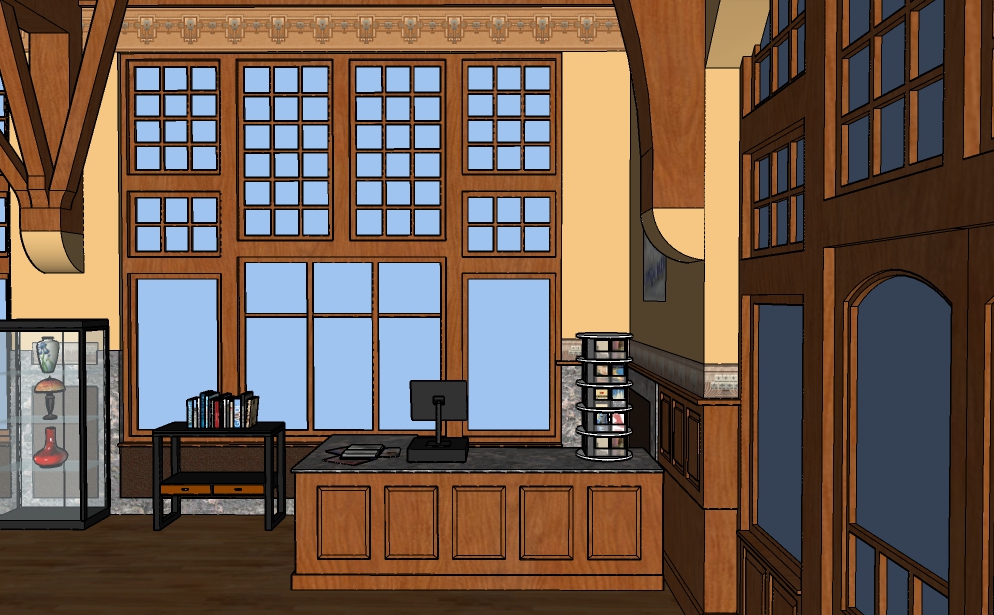
New Art (Nieuwe Kunst) 1895 – 1925:
Industrialisation started late in the Netherlands. It only peaked around 1910.
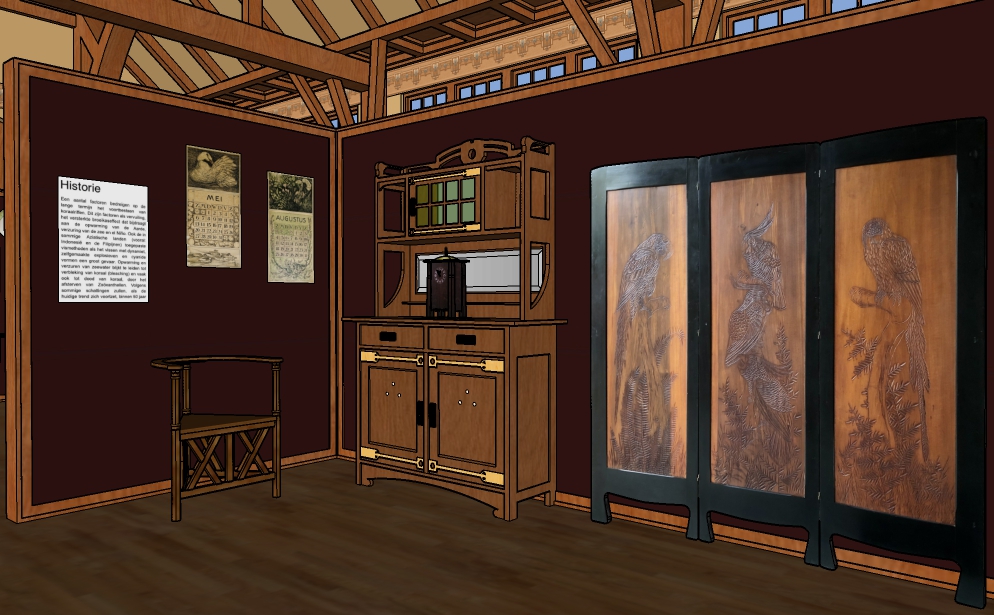
The many decorations and the animistic foundation, in which the woman is central, did not fit in with the prevailing Calvinist ideology. Art Nouveau was considered too decadent and frivolous, leading to mocking names such as spaghetti style and salad oil style (slaoliestijl). The latter name is due to an advertising poster, designed by Jan Toorop, for Calvé’s salad oil. Exceptions to this are graphic art and the work of earthenware factories such as Rozenburg and Zuid-Holland.
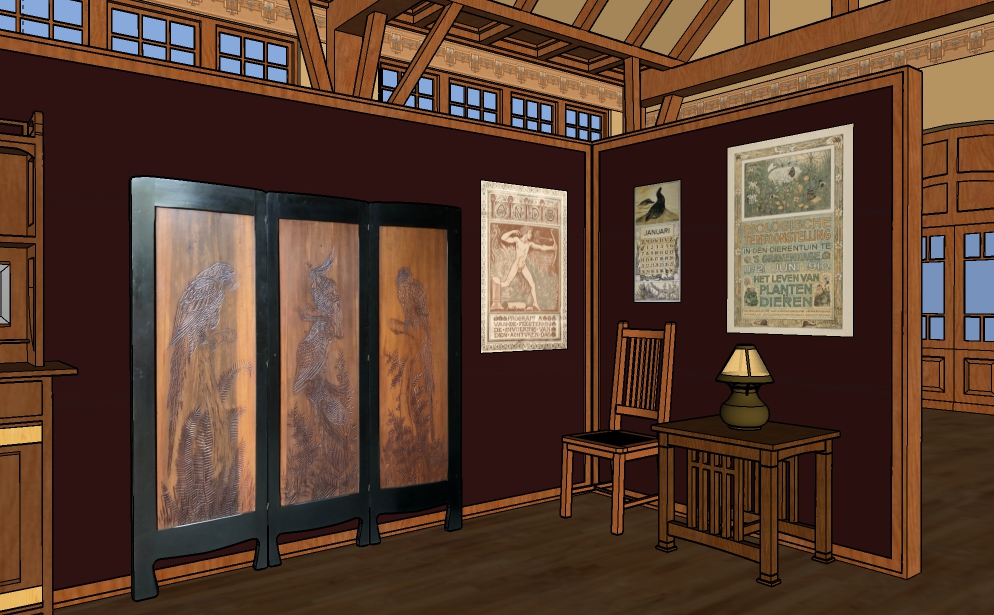
New Art is a rationalistic Dutch style. This style is often referred to as the Dutch Art Nouveau. This is not entirely correct. The origin of New Art lies in the English Arts and Crafts movement. This movement is characterised mainly by abstract forms and geometric motifs with few decorations. New Art architects H.P. Berlage and Jac. van den Bosch opened a furniture store in 1901, called ‘t Binnenhuis, on Raadhuisstraat in Amsterdam. ‘t Binnenhuis was the first design store in the Netherlands. The designers Jan Eisenloeffel, Chris van der Hoef, and Willem Penaat joined them. Around 1903, Jan Eisenloeffel designed his famous four-piece brass tea set. For the first time, the construction is central, not the decoration. Eisenloeffel believed that the construction should be seen as a decoration. The consumer should be able to clearly see how the object was put together.
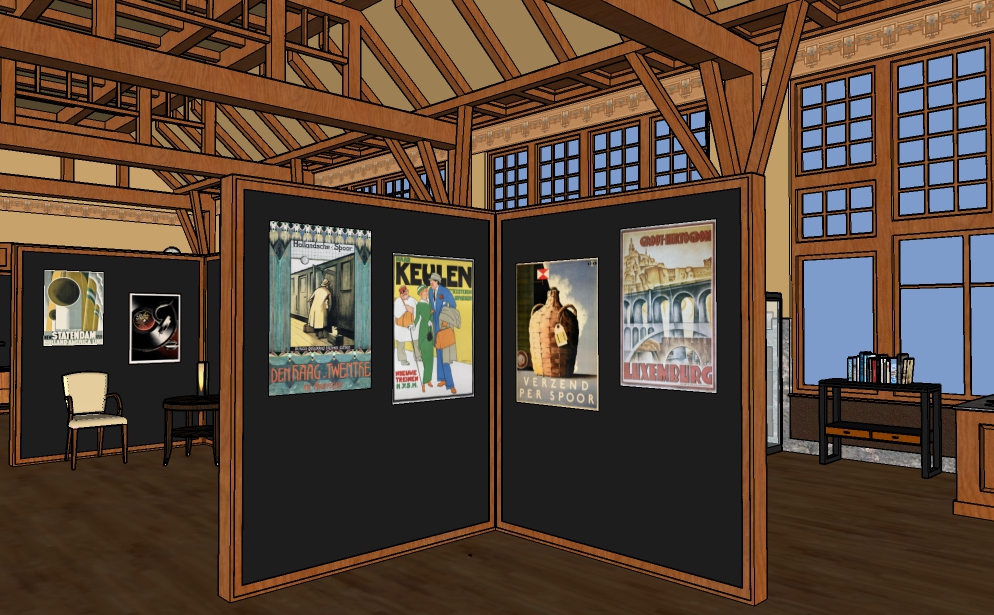
In 1903, a lot changed in the field of ceramics. The ceramists Klaas Vet and Bert Nienhuis discovered how to make matte glazes. Bert Nienhuis designed vases for the pottery factory De Distel, mostly with a white background and geometric motifs. In 1904, Jan Eisenloeffel, Chris van der Hoef, and Willem Penaat fell out with Berlage and Jac. van den Bosch over financial policy. They decided to leave ‘t Binnenhuis and founded a new design store called De Woning (The Home). Chris van der Hoef was commissioned to design a suitable service in the New Art style. He designed an extremely sleek service with the only decoration being two green circles and a motif consisting of nine blocks, five green and four yellow. This service was named “Blokjesmodern” (Block Modern) and became a success.
Both ‘t Binnenhuis and De Woning wanted to sell applied art objects that were affordable for the common man. Unfortunately, little came of this because production costs were high and it was not to the liking of the average worker, who preferred a richly decorated object to an abstractly decorated one. The New Art was mainly popular with the wealthy.
With this design, the Netherlands was very progressive compared to other countries that were still completely under the spell of Art Nouveau and only developed an abstract style 15 to 20 years later. Unfortunately, too little attention is paid to this progressive art movement to this day, while it can be seen as the first form of Dutch design. The museum wants to give extensive attention to this. The Mutek collection contains an extensive collection of furniture, clocks, vases, lamps, and tableware that were sold by ‘t Binnenhuis and De Woning.
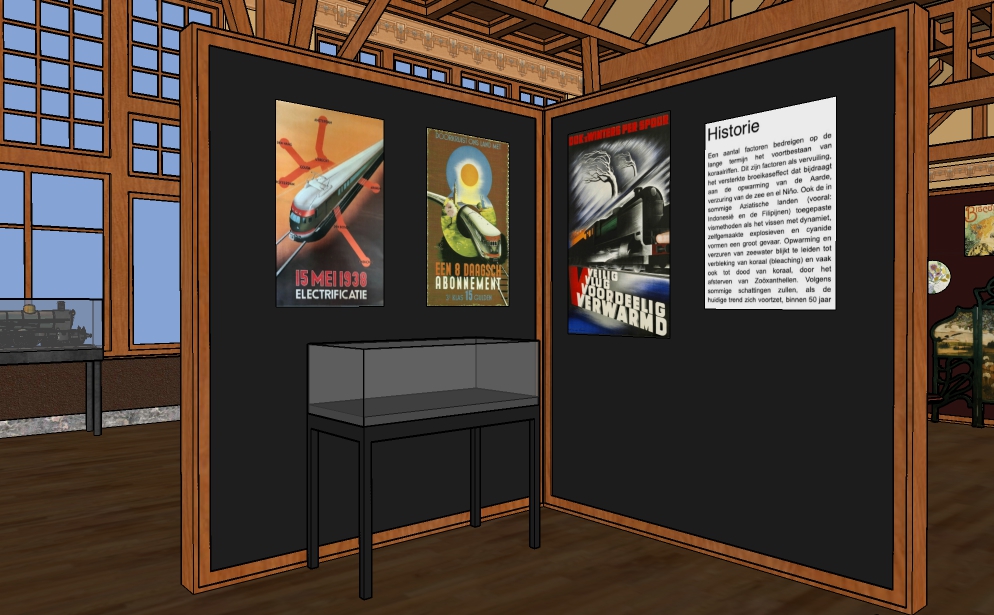
Art Deco 1920 – 1940:
After the 1900 World Exhibition in Paris, Hector Guimard, Eugene Grasset, and other important Art Nouveau artists united and founded a society of decorative designers. In 1925 they organised the famous exhibition ‘Exposition Internationale des Arts Décoratifs et Industriels Modernes’. This was the first exhibition where artistic innovation was a requirement.
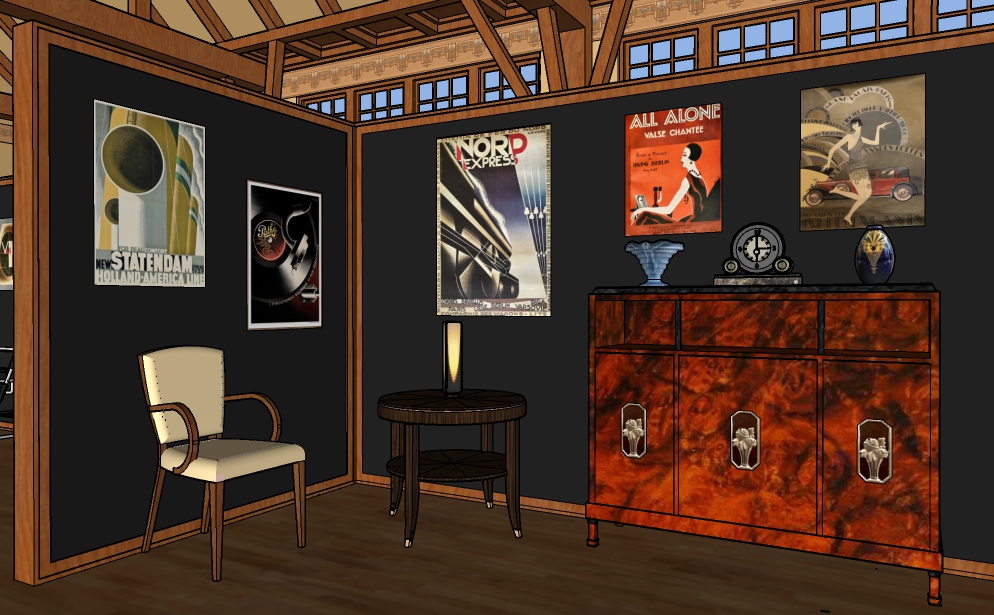
A multitude of new styles emerged, namely Expressionism, Cubism, Modernism, and Functionalism. This led to a lot of variation within Art Deco. Characteristics of this art style are primary use of color and abstract forms with the use of new materials, such as chrome. In French Art Deco, a lot was decorated with abstract floral motifs.
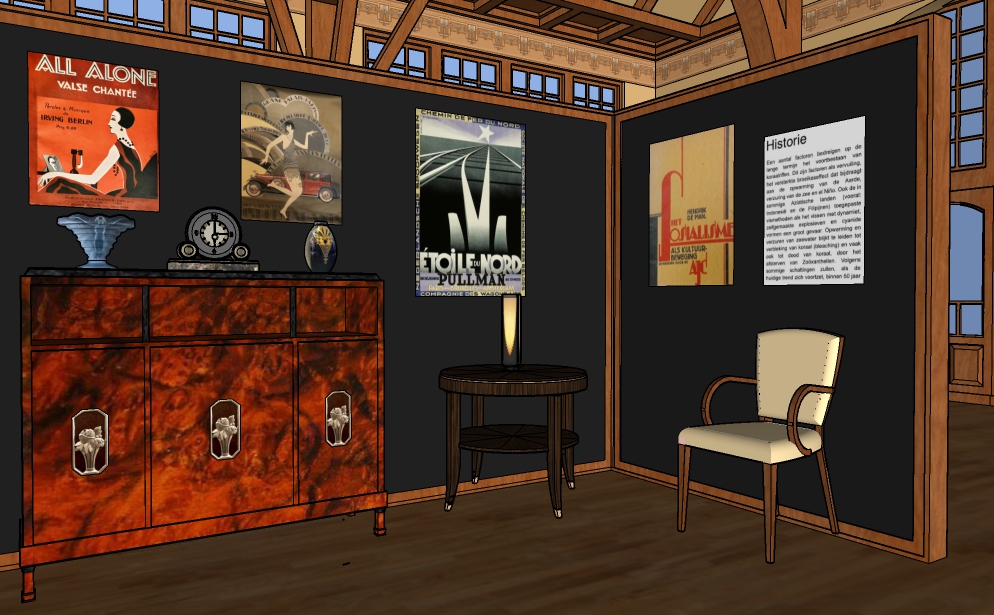
New movements such as Bauhaus, De Stijl, and the Nieuwe Bouwen (New Building) emerged during the time of Art Deco. The Mutek collection consists of an extensive collection of furniture, clocks, vases, lamps, and tableware, designed by Edgar Brandt, Jacques Ruhlmann, Paul Follot, Henri Rapin, Karl Wiedmann, Wilhelm Wagenfeld, Marianne Brandt, Copier, Daum Nancy, Charles Schneider, Leen Muller, Piet Zwart, Bart van der Leck, Frans Wouters, Gispen, Charles Chatteau, Walter Gropius, Josef Hoffmann, Peter Behrens, Joseph, Otto Wagner, Koloman Moser, Olbrich, René Lalique, WMF, Christian Fjerdingstad, and Hettier et Vincent, among others.
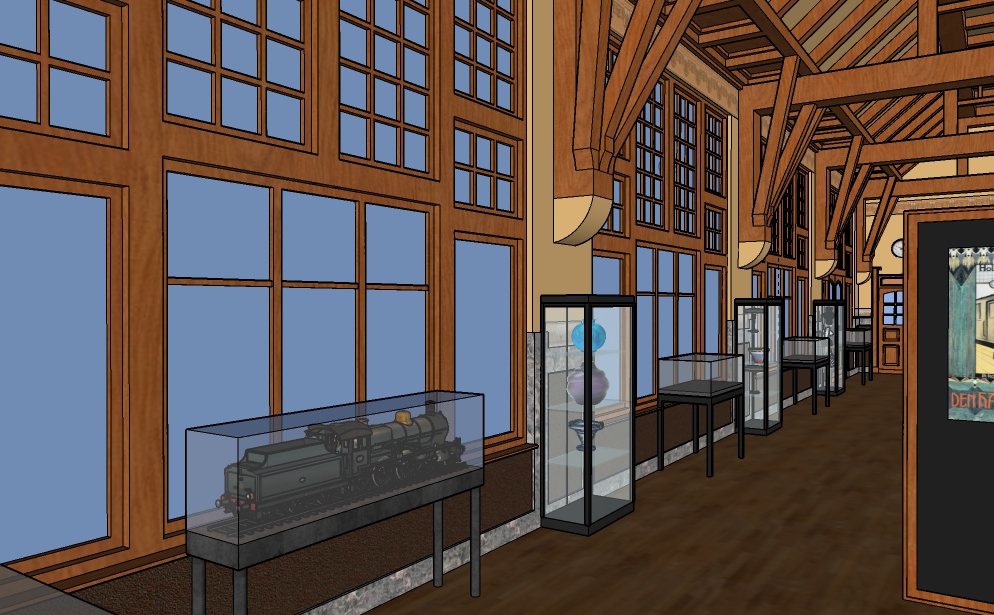
Amsterdam School 1917 – 1935:
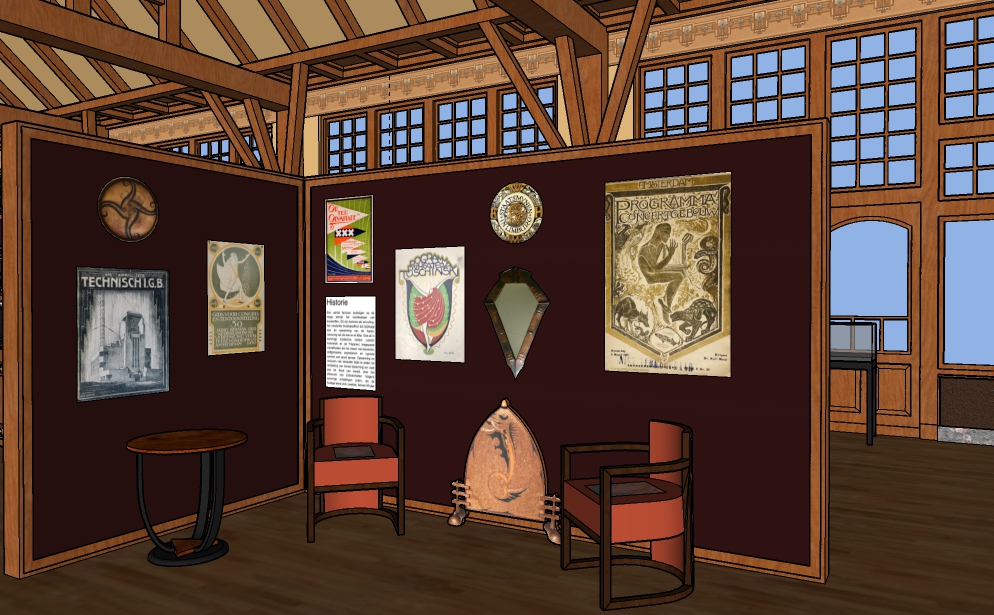
Around 1916, criticism of the New Art arose, particularly from architects Michel de Klerk, Piet Kramer, and Jo van der Meij. They developed a new style that was later called the Amsterdam School by architect Jan Gratama. Characteristics of this art style are parabolic shapes, modestly decorated with figures that represent symbolism. The work of the artist and sculptor Hildo Krop is a good example of this. He designed sculptures, furniture, and ceramics with abstractly drawn animals, inspired by animistic culture.
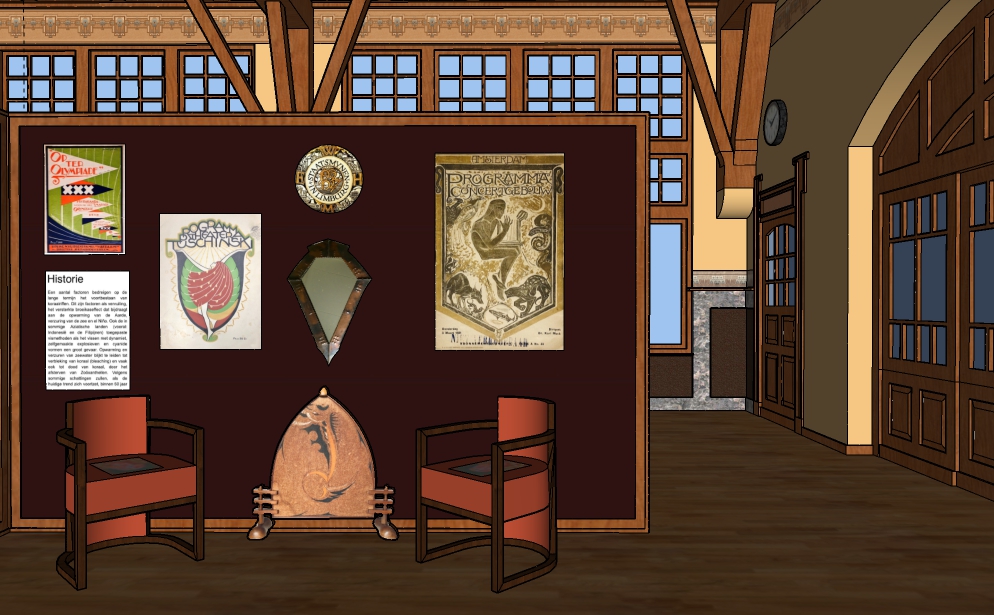
The Amsterdam School also has many influences from Indonesia. For example, the artist Louis Bogtman applied the old Indonesian technique of Batik (a technique for dyeing textiles) to wood. He made bowls, clocks, vases, and lamps that were decorated with Amsterdam School motifs. When electric lighting became accessible to more people, glass artist Hendrik Cornelis Herens focused on manufacturing lamps that fully matched this style. Renewed techniques allowed glass panes to be bent, making it possible to create lamps in round and parabolic shapes. These were stained with Amsterdam School motifs.
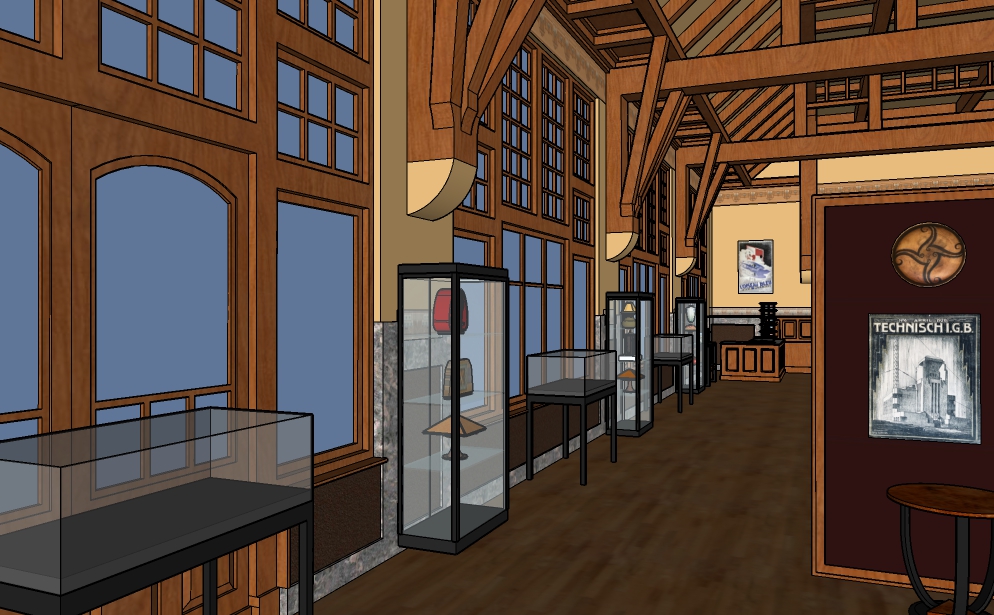
The social objective, to create art for the worker, was unfortunately not achieved because the production process was too expensive. Partly as a result of the economic crisis of 1929, the Amsterdam School era came to an end in the mid-1930s. The Mutek collection consists of an extensive collection of furniture, clocks, vases, lamps, and tableware, designed by Hildo Krop, Louis Bogtman, Joseph Mendes da Costa, Cris Agterberg, Chris van der Hoef, Chris Lanooy, Leen Muller, Jaap Gidding, J.C. Stoffels, Hendrik Herens, Eelke Snel, Jan Schonk, Conrad Fehn, C.J. Gellings, Edmond Bellefroid, Johannes Bosma, Winkelman van der Bijl, and Georg Nilsson, among others.
1950 – 1970:
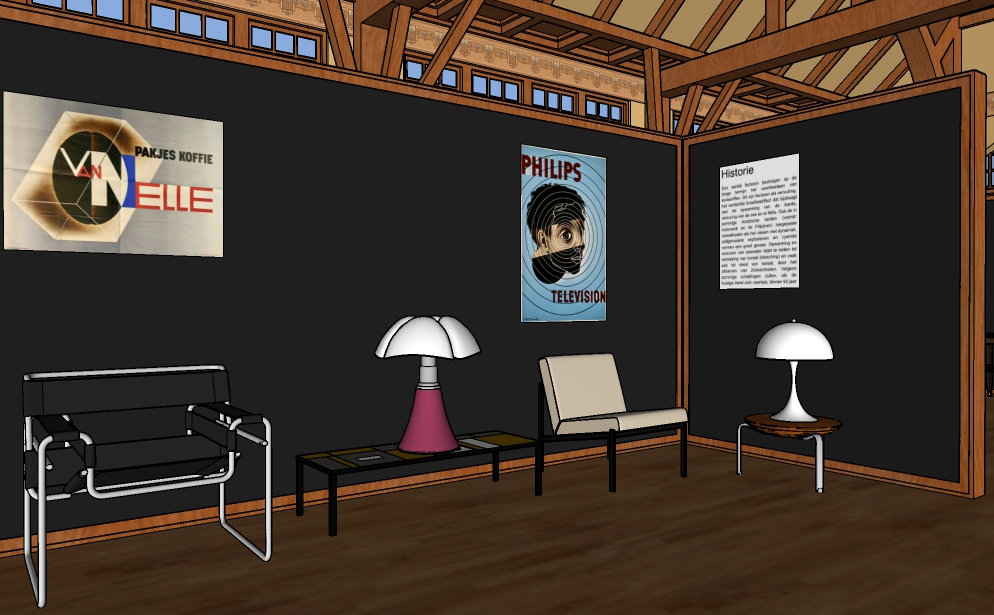
After the Second World War, there was no dominant art movement. Instead, several art movements coexisted.
Streamline 1937 – 1960:
Streamline is an art movement of both consumer goods, vehicles, and architecture that originated in the 1930s in America as a continuation of Art Deco. The movement is inspired by aerodynamics and is characterised by curved shapes, long horizontal lines with sometimes nautical influences. American designers and architects saw a new aspect, based on the angular shape of Art Deco, by streamlining, i.e., rounding, these corners.
This was first applied by industrial designers through scientific findings about the aerodynamics of vehicles. The Streamline was sometimes a reflection of sober economic times. The corners and ornaments were replaced by simple aerodynamic curves. The reason Streamline was applied to household appliances was to give an impression of modernity. This art movement ended in the late 1950s. An important designer of this art movement is the Frenchman Raymond Loewy.
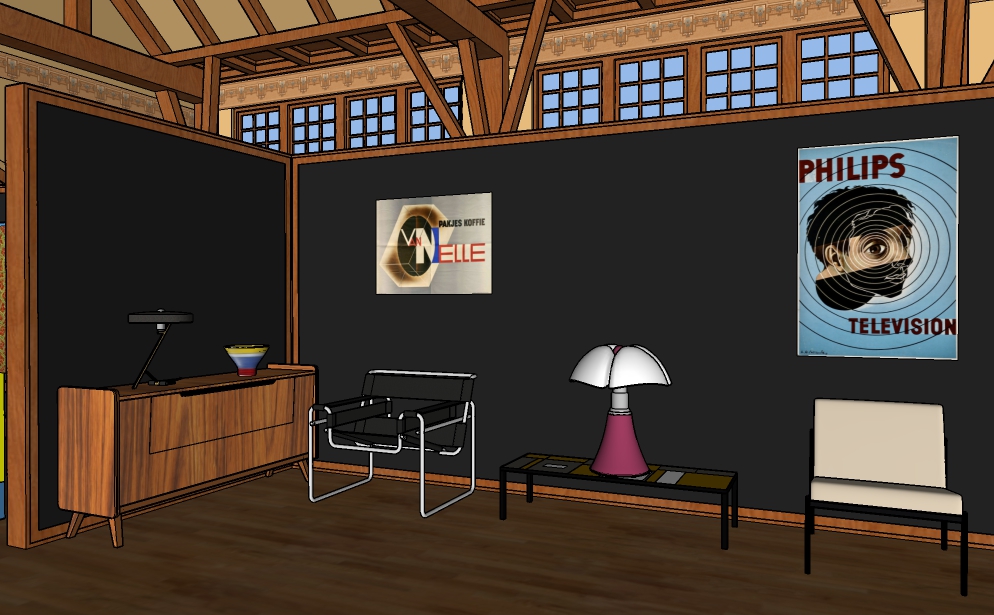
Space Age 1957 – 1970:
Space Age is an art movement that arose from the optimism within the cultural sector about the space race in the mid-20th century. In 1957, the Soviet Union launched the unmanned satellite Sputnik I. This event is seen as the beginning of the space age. After that, competition erupted between the two great powers of the time, the climax of which was the Apollo moon program. With the first steps into space, a new era began. People imagined a new phase of life with new materials. The optimism that resulted from this was reflected in art, fashion, music, and design. New materials such as plastic, fibreglass, and multiplex found their way to the studios of a new generation of designers. Furniture with futuristic and bizarre designs, influenced by the design of rockets, UFOs, and spaceships, seduced the population. Famous designers of this movement include Verner Panton, Arne Jacobsen, Eero Aarnio’s, Gino Sarfatti, Michel Hudrisier, Peter Ghyczy, and Eero Saarinen.
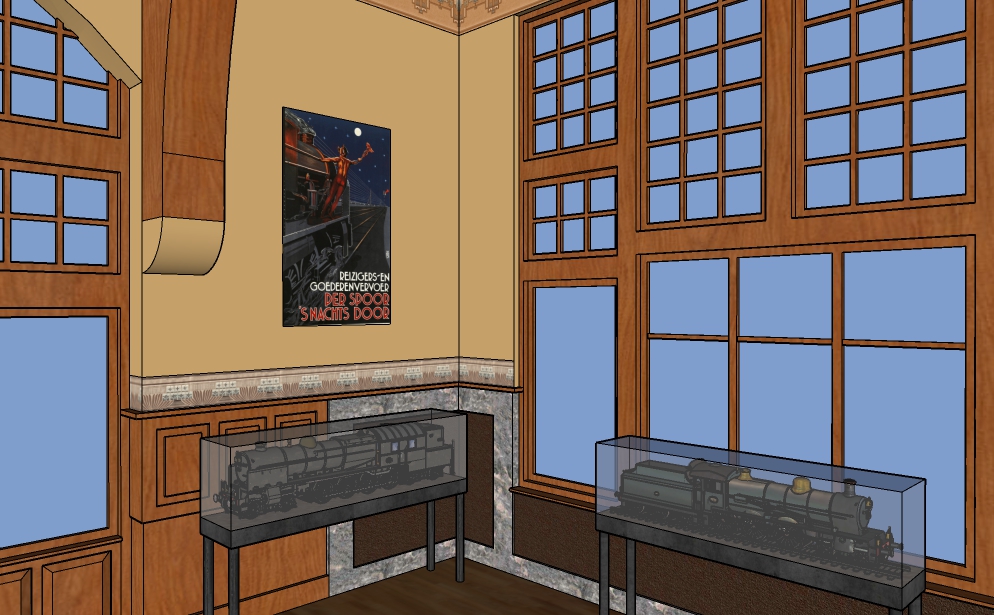
Archizoom Associati 1966 – 1974:
In 1966, the group Archizoom Associati was founded in Florence. Members of the group were the architects Andrea Branzi, Paolo Deganello, Gilberto Corretti, and Massimo Morozzi. Designers Lucia and Dario Bartolini joined the group in 1968. This group is considered the founder of anti-design. In addition to architecture and product design, Archizoom was also involved in urban planning. These designers questioned the traditional status of the function of design and architecture. They were anti-design. With ironic and challenging designs, they radically opposed functionalism and consumerism. Archizoom used elements from Pop Art and kitsch. The group’s projects and designs showed the search for a radically new, technology-based approach. Inspired by Pop Art, Archizoom provocatively detached itself from the dominant, functionalist style. An example is the Superonda sofa from 1966, a wave-shaped, two-piece polyurethane block that can be arranged in different configurations. It can be a bed, a sofa, or a chaise longue. Due to its wavy shape, the sofa (which is still made by Poltronova) invites use in many different forms. In addition to design, Archizoom was also involved in the restoration of buildings and urban planning. Although Archizoom was disbanded in 1974, this avant-garde design was continued by the design agencies Alchimia and Memphis.
The Mutek collection consists of an extensive collection of furniture, clocks, vases, lamps, and tableware, designed by Pastoe, Jaap Ravelli, Gae Aulenti, Carlo Moretti, Gino Sarfatti, Louis Kalff, Tomado, Osvaldo Borsani, Arne Jacobsen, Poul Henningsen, Kosta Boda, Holmegaard, Wim Visser, Pablo Picasso, Andrea Branzi, Paolo Deganello, Gilberto Corretti, Massimo Morozzi. Verner Panton, Arne Jacobsen, Eero Aarnio’s, Gino Sarfatti, Michel Hudrisier, Peter Ghyczy, and Eero Saarinen, among others.
1970 – 1980
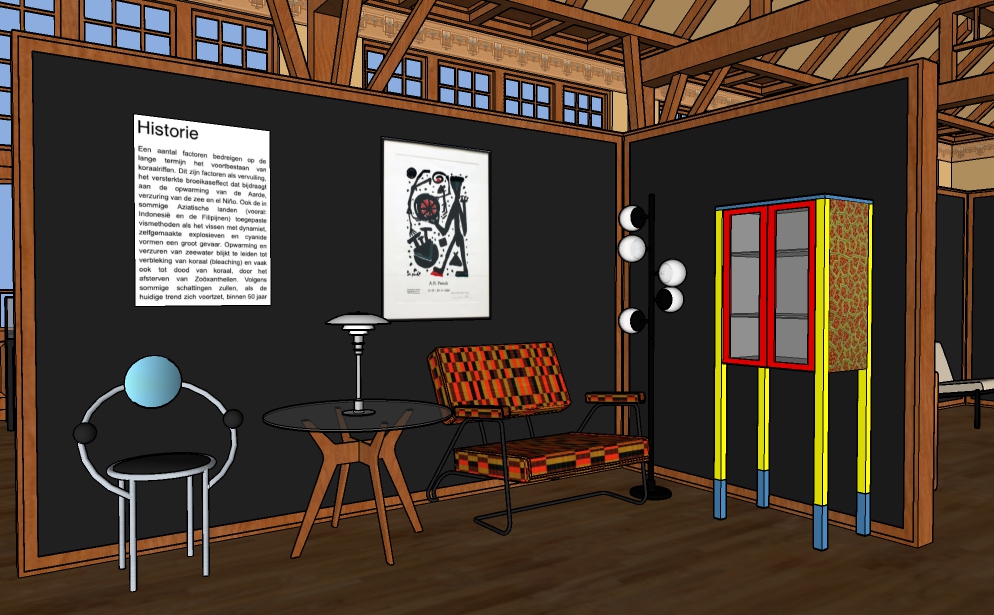
Alchimia (1976-1980)
Alchimia was founded in Milan as a gallery that offered designers space to exhibit their prototypes. This triggered a second wave of anti-design in Milan in the second half of the 1970s, although by that time the movement had become more international. Designers who exhibited in 1978 included Ettore Sottsass and Alessandro Mendini. The first collections shown in 1979 and 1980 were ironically named “Bauhaus 1” and “Bauhaus 2”. Their formal language referenced kitsch and motifs with imagery from the 1950s. Mendini was the main representative in 1980. Studio Alchimia described itself as “post-avant-garde”. In many respects, Alchimia was the precursor to the more commercial Memphis.
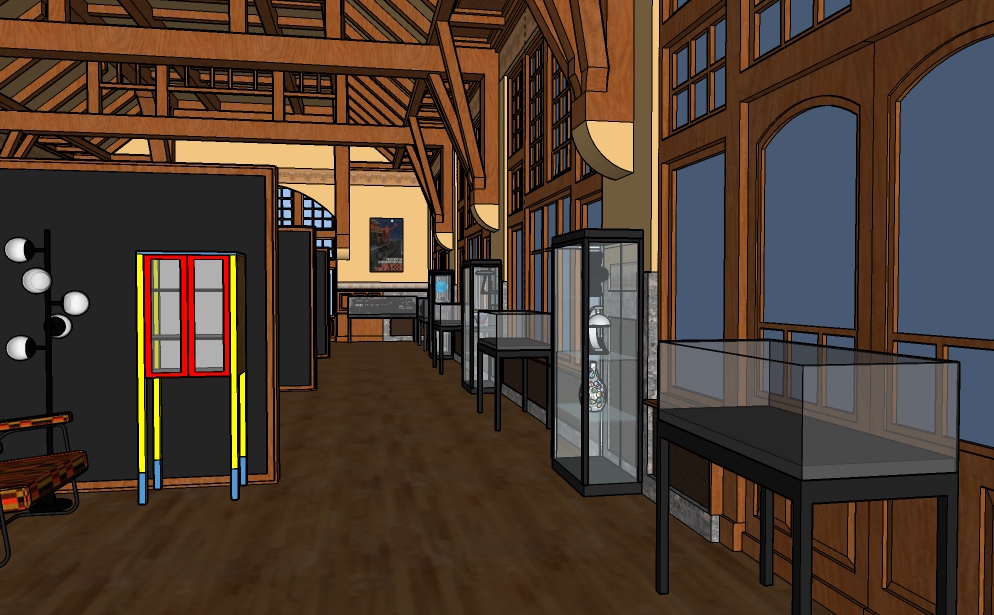
Memphis Design (1981-1988)
In 1981, Ettore Sottsass founded Memphis Design, an Italian designer group that ushered in the postmodern design phase. They reacted to modernism: they criticised the sober design style of functionalism where only function was the starting point and came up with striking designs, saturated with symbolism and colour. These postmodern designers deliberately cultivated the “bad taste” that modernists had tried to combat. The focus was not on the function of the product, but playfulness and emotional value became the guiding principle. In response to ‘form follows function’, the statement was: ‘form follows emotion’. This group also returned to local and historical styles and values. Because they wanted to combine high culture with popular culture, the name Memphis was chosen – the capital of ancient Egypt, but also the birthplace of Elvis Presley (Memphis, Tennessee).
The recognisable, uniform design of the Memphis group is colourful, carefree, playful, deliberately naive, and shows motifs from popular everyday culture, pop, punk, toys, films, and comics. They flirted with shapes and materials that were previously the epitome of bad taste and kitsch. Memphis glorified the consumer society. They had an ironic approach, in which surface decoration received a lot of emphasis, but their products were usually not truly functional. Memphis made products to give character to the personal living environment: furniture, carpets, home textiles, lamps, ceramics, glass, tableware, home accessories, and clothing. In the 1980s, Memphis organised an annual exhibition in Milan. In addition to Sottsass, designers and architects such as Andrea Branzi, Natalie du Pasquier, Michael Graves, Hans Hollein Shiro Kuromata, Michele de Lucchi, Javier Mariscal, Peter Shire, George Sowden, Matteo Thun, and Marco Zanini were involved with Memphis.
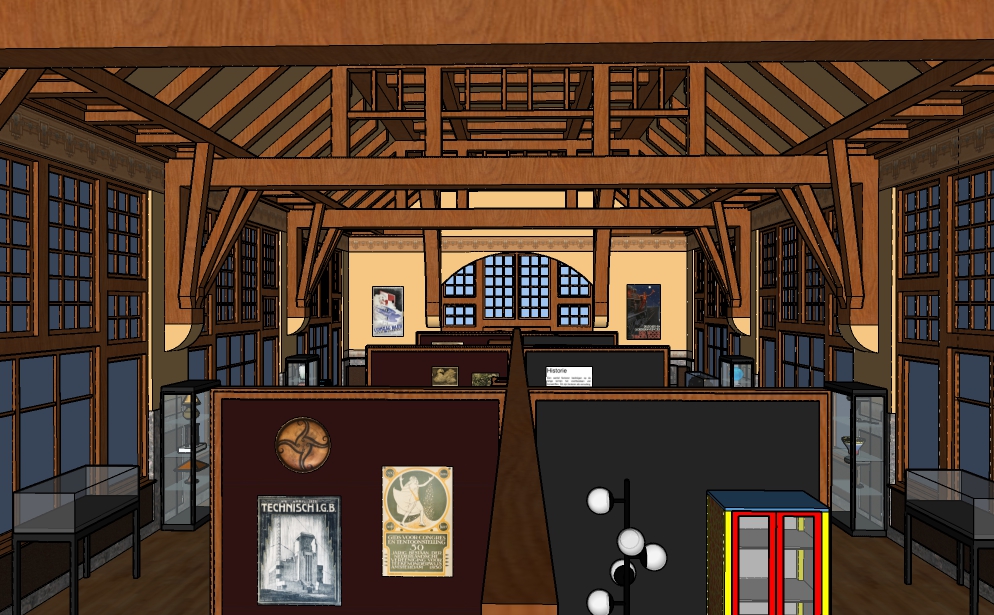
The Mutek collection consists of an extensive collection of furniture, clocks, vases, lamps, and tableware, designed by Fritz Hansen, Georg Jensen, Jan van der Vaart, Willen Heesen, Raak, Ingo Maurer, Verner Panton, Just Meijer, Venini, Ingeborg Lundin, Peter Shire, Georg Swoden, and Ettore Sottsass, among others.
